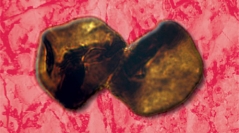

 Geodiversitas
47 (15) - Pages 641-657
Geodiversitas
47 (15) - Pages 641-657The Khorat Plateau, situated in northeastern Thailand and extending partially into Laos and Cambodia, was a thriving ecosystem during the Early Cretaceous. It harboured a diverse array of vertebrate fauna, including freshwater hybodont shark-like fish, actinopterygian fishes, turtles, crocodilians, theropod and sauropod dinosaurs, as well as bivalves. However, not many studies were focused on the flora of this ecosystem. This study focuses on palynological findings from the Sao Khua Formation in the southeastern Khorat Plateau. A total of 74 species from 43 genera were identified, forming an assemblage characterised by Punctatisporites-Dicheiropollis-Classopollis. Based on recent radiometric dating of detrital zircon grains, the Sao Khua Formation is as assigned to an age no younger than the mid to late Valanginian. As the result, the key taxa found in this formation have been calibrated and the age of the palynological assemblage is therefore Valanginian. The assemblage was dominated by pollen of Cheirolepidiaceae together with diversity of pteridophyte spores, suggesting a humid subtropical climate with periodic arid seasons. Comparative analysis with other palynological provinces places this area within the Eastern Tethys Province of the Pan-Tethys Realm.
Thailand, Sao Khua Formation, palynological assemblage, Valanginian, humid subtropical climate, Eastern Tethys Province